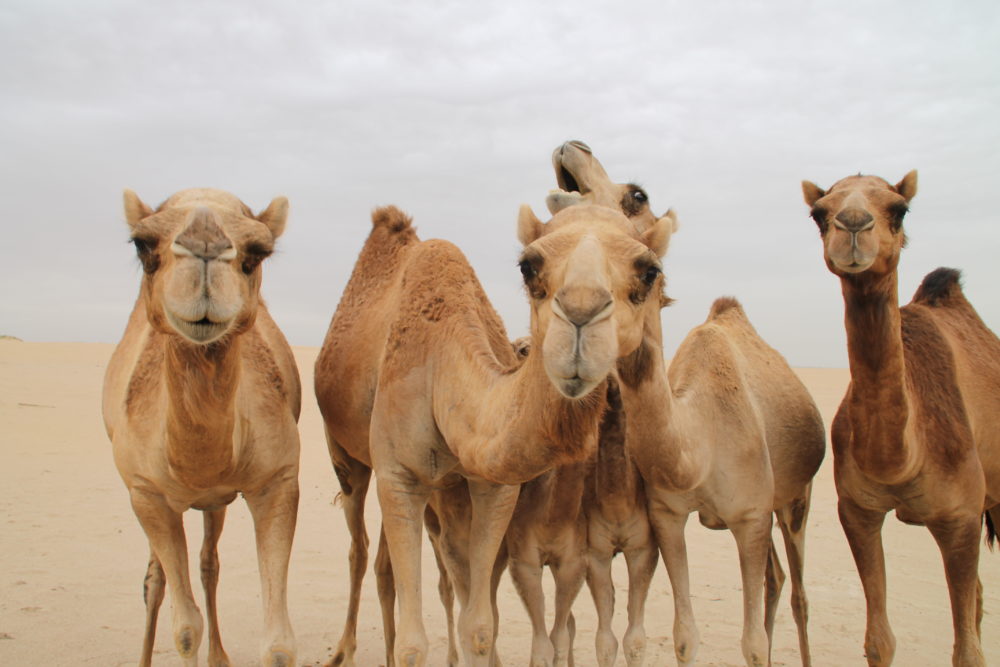
Camels are desert mammals with long legs, a big- lipped snout and humped back. There are two different types on camels, Dromedary (one hump) and Bactrian (two humps). Camels humps consist of stored fat, which they can metabolize when food and water is scarce.
Besides their humps they have many other ways to adapt to their environment. They have a third eyelid that protects their eyes from the blowing sand. They also have two rows of long eyelashes also to protect their eyes. You would also think that sand in the nose would be a problem but not for camels, they can shut their nostrils during sand storms.
Camels aren’t picky about what they eat. Their thick lips allow them to eat things that most other animals couldn’t, such as thorny plants. Camels are herbivores so you probably won’t find them eating meat. Filling up on water, when it’s available, is also very important for camels. They can drink 30 gallons of water in just 13 minutes. Their bodies re-hydrate faster than any other mammal. When there is little food and water, the camel uses the fat stored in their humps to get them through the tough times.
Humans have used camels as a source of transport for thousands of years. They can carry about 500 pounds on their backs, earning camels a nickname, “ships of the desert.” Domestic camels are often the main source of meat, milk and even leather or wool products. Most camels tower above humans. A Bactrian camel, grows to a shoulder height of 6 feet (1.8 meters) and a body length of 10 feet (3 m). They normally weigh 1,320 to 2,200 pounds when they are fully grown. Dromedary camels get up to about 6.5 feet (2 m) tall at the shoulder and weigh 880 to 1,325 pounds.
Camels are very unique animals and are born with a very skilled mind set to help get through tough times.





